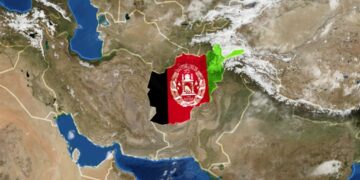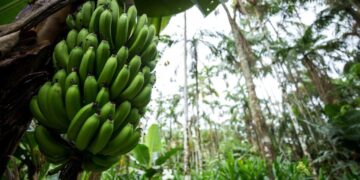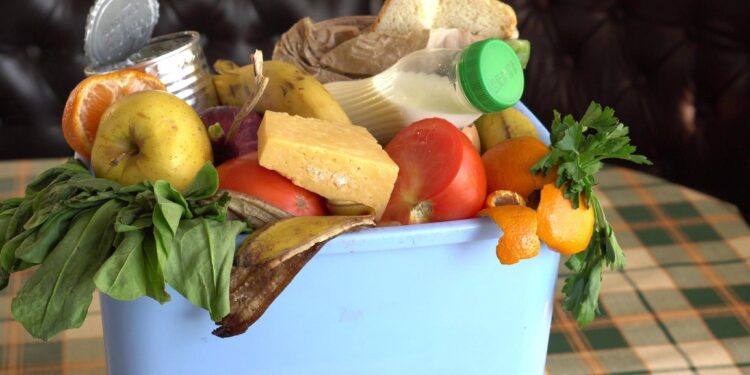Helen Onyeaka 1,2 Deborah C. Chukwugozie;1,2
1School of Chemical Engineering, University of Birmingham, United Kindgom B15 2TT
2Department of Microbiology, Federal University Otuoke, Nigeria 562103
*Corresponding Author Email: h.onyeaka@bham.ac.uk …
Highlights
- Food waste is a global issue with economic, environmental, and social implications, as one-third of produced food is wasted yearly.
- Circular economy approaches can effectively address food waste by reusing and recycling resources.
- This perspective paper explores the potential of circular economy approaches in tackling food waste and promoting sustainability.
- It provides an overview of food waste, discusses circular economy principles and implementation, and presents case studies.
- Circular economy approaches such as prevention, rescue and redistribution, recycling and composting, and upcycling can reduce waste and create benefits.
Graphical Abstract

Abstract
Food waste has been a pressing global issue with significant economic, environmental and social implications. Approximately one-third of the food produced for human consumption is wasted or lost yearly, contributing to greenhouse gas emissions, hunger and food insecurity. Circular economy approaches offer innovative solutions to tackle food waste by emphasizing the reuse and recycling of materials and resources. This perspective paper explores the potential of circular economy approaches in addressing or tackling food waste while promoting sustainability. It provides an overview of the current state of food waste, discusses the principles and implementation of circular economy approaches, and presents case studies and initiatives that exemplify the application of circular economy principles in tackling food waste. Circular economy approaches, such as food waste prevention, food rescue and redistribution, organic waste recycling and composting and upcycling food by-products, can effectively reduce food waste, conserve resources, minimize environmental impact and create economic and social benefits. We can move towards a more sustainable and efficient food system by adopting circular economy approaches.
Keywords: Food waste, Circular economy, Food system, Sustainability, Food insecurity, Hunger.
1. Introduction
Food waste is an important concern in alleviating hunger, boosting income, and enhancing food security in the world’s least developed countries (FAO, 2011). It has been a major concern globally due to its economic, environmental and social implications (Seberini, 2020). According to The Food and Agriculture Organization (FAO) 2009, approximately one-third of food produced for human consumption is wasted or lost yearly, contributing to greenhouse gas emissions, food insecurity and hunger.
In developing countries, food loss and waste in food supply chains can be attributed to major factors such as inadequate management of perishable food items, stakeholder attitudes, buyer-supplier agreements, and disruptions in the supply chain (Chauhan et al., 2021). While other factors like consumer behaviour and inadequate infrastructure for food storage and processing in developed countries. Consumer behaviour is a major factor that contributes to food waste, making it one of the most serious problems in developed countries (Schanes, 2016) where consumers often demand perfect-looking produce and large portion sizes, leading to significant waste in supermarkets and restaurants (Yahia & Mourad, 2020).
Circular economy approaches have been gaining attention as a solution to the problem of food waste in recent years. These approaches offer a way to address the problem of food waste by emphasizing the reuse and recycling of materials and resources. One can discover innovative methods for reducing food waste and losses by adopting circular approaches, such as reusing and recovering resources rather than devaluing them. For instance, food waste can be composted, repurposed as animal feed, utilized for energy recovery, converted into biofuels, and even used to produce biomaterials. Several studies have explored these solutions, studies by Borrello et al. (2017), Corrado et al. (2019), Cristóbal et al. (2018), Principato et al. (2019), and Tostivint et al. (2017) explored how these circular economy approaches can proffer solutions to food waste.
They are based on the principles of designing out waste and pollution, keeping products and materials in use, and regenerating natural systems. By closing the loop on food production and consumption, circular economy approaches can reduce waste and promote sustainability in the food system. This perspective paper aims to explore the potential of circular economy approaches to tackle food waste and promote sustainability. This paper will begin by providing background and context on the problem of food waste, followed by an overview of circular economy approaches. Finally, this paper will discuss examples of circular economy approaches in action and their potential to transform the food system.
2. The Current State of Food Waste
The current state of food waste and loss globally is on the rise as approximately one-third of food produced for human consumption is lost or wasted each year. This amount of food waste could feed 1.26 billion people suffering from undernourishment every year (FAO, 2019). This waste cost around $1 trillion, excluding society’s social and environmental costs (FAO, 2014). The causes of food waste vary from consumer behavior in developed countries to challenges in infrastructure in developing countries. A study by Rutten, 2013 suggests that reducing food waste in developed countries can lower food prices in developing countries, improve supply chain efficiency, and conserve resources that could be redirected to reduce hunger. These changes can enhance access to nutritious food for vulnerable populations (Gustavsson et al., 2011).
Food waste has significant impacts. It contributes to greenhouse gas emissions, particularly methane. According to U.S. Environmental Protection Agency (EPA) report in 2021, food loss and waste in the United States contribute to approximately 170 million metric tons of carbon dioxide equivalent greenhouse gas emissions, not including landfill emissions. In addition, about 3 billion tons of greenhouse gases are emitted every year due to food waste, making it the third largest carbon dioxide producer after the United States and China (World Food Program USA, 2021). About 30 to 40 per cent of food is wasted in the US, translating to more than 20 pounds of food per person wasted every month. This waste happens at various levels, including production and supply chains, retail outlets, and among consumers who buy more than what they need and discard the rest. Retailers and consumers in industrialized countries in North America, Europe, and Asia waste 222 million tons of food each year (UN, 2011). This amount is nearly equivalent to the amount of food produced yearly in sub-Saharan Africa (230 million tons). Food waste, however, also impacts essential resources like water and soil. The amount of water used in the production of discarded food could three times fill Lake Geneva (World Food Program USA, 2021).
2.1 The Circular Economy
The concept of a circular economy revolves around minimizing waste and maximizing the value of resources by promoting the reuse, repair, refurbishment, and recycling of materials and products (Jurgilevich et al., 2016). Contrary to the linear model where resources are used and discarded as waste, the circular economy aims at creating a closed-loop system where waste is minimized, and materials and products are kept in circulation for as long as possible. Circular economy approaches offer sustainable and innovative ways of tackling food waste. The transition from the current linear economy, often referred to as the “take-make-dispose” model, to a circular economy (Bocken et al., 2017), has gained significant attention as a strategy for achieving sustainability, reducing carbon emissions, and improving resource efficiency (European Commission 2015).
The concept of Circular economy regarding the food system involves the reduction of the amount of food waste generated, reusing food, recycling nutrients, and utilizing food waste by-products (Jurgilevich et al., 2016). Figure 1 illustrates the areas of implementation of the circular economy in the food system. Implementing circular economy approaches can help reduce the environmental impact of food production and consumption, conserve resources, address issues of food security and hunger, create new business opportunities and contribute to a more sustainable and resilient food system.

Figure 1: Areas circular economy can be implemented in the food system (Fassio & Tecco, 2019)
3. Circular Economy Approaches to Tackle Food Waste
3.1 Food Waste Prevention
Food waste prevention is an important part of circular economy approaches to tackling food waste. It involves several measures to minimize food waste at various stages, including production, processing, distribution, and consumption. Strategies for food waste prevention include improving inventory management, implementing better storage and preservation techniques, educating consumers about proper food handling and storage, and encouraging responsible purchasing and meal planning.
3.2 Food Rescue and Redistribution
Food rescue and redistribution initiatives focus on rescuing excess food in the food supply chain and directing it for human consumption (Hecht & Neff, 2019). These initiatives involve collaborations between food retailers, restaurants, and food banks or charitable organizations. Excess food is collected, sorted, and distributed to vulnerable populations or converted into meals for community programs instead of disposing of it. In addition to addressing food waste, food redistribution also tackles food poverty. By redistributing surplus food to food-insecure persons and communities, it helps in bridging the gap between food loss and food insecurity. This low-cost approach has been recognized as an effective means to combat both issues simultaneously (Mousa & Freeland-Graves 2017; Sert et al., 2018).
3.3 Organic Waste Recycling and Composting
Food waste can be used to produce organic fertiliser (compost) (Waqas et al., 2018), bioenergy (Kumar et al., 2018), and other valuable products (Teigiserova et al., 2019). Anaerobic digestion breaks down organic waste to produce biogas, which can be a source of renewable energy and compost rich in nutrients, that can be used in agriculture. This process diverts organic waste from landfills, reduces greenhouse gas emissions and generates renewable energy and soil amendments (USEPA, n/d).
3.4 Upcycling Food By-Products
The upcycling approach involves transforming food waste into new valuable products (Sharma & Deutsch 2023). Food waste can be processed into animal feed, food ingredients, or innovative products like beverages or snacks. This approach reduces waste, maximizes resource utilization, and creates economic opportunities. By upcycling food by-products, the circular economy minimizes the environmental impact of waste and promotes a more sustainable food system.
These circular economy approaches can help to reduce food waste, conserve resources, minimize environmental impact and create economic and social benefits, therefore, contributing to a more sustainable and efficient food system.
4. Case Studies and Initiatives
4.1 Too Good to Go App: Reducing Food Waste in the Hospitality Sector
The “Too Good to Go” app addresses food waste in the hospitality sector (Jaunty Goat Coffee Ltd. n/d) It connects restaurants, cafes, and hotels with consumers by offering surplus food at discounted prices near closing time. This approach helps to prevent food waste by ensuring that excess food is consumed instead of being thrown away. It also raises consumer awareness about food waste and encourages responsible consumption.
4.2 Closed-Loop Agriculture
Closed-loop systems in agricultural production aim to minimize waste and maximize resource efficiency. This system involves the integration of livestock and crop farming, where animal waste is used as fertilizer for crops, and crop residues are used as feed for animals (Komorowska et al., 2022). This approach reduces the need for external inputs, conserves resources, and minimizes waste generation. It promotes circularity by turning waste into valuable resources within the agricultural system.
4.3 Innovative Food Waste Reduction Technologies
Various innovative technologies are being developed to tackle food waste. Technologies like Internet of Things (IoT), Big Data technology and other smart sensing devices and data analytics are used to monitor and optimize food storage conditions, reducing spoilage and waste (Ahmadzadeh et al., 2023). High-pressure processing and cold plasma technology can extend the shelf life of perishable foods. Additionally, insect-based bioconversion is an emerging field in addressing food waste, when insects are mass-produced under controlled conditions, they convert food waste into valuable products such as protein or lipids, pharmaceuticals, biofuels, lubricants, and fertilizer from their excrement (Fowles & Nansen, 2020).
These case studies and initiatives highlight practical examples of circular economy approaches in tackling food waste. They demonstrate the potential of these approaches to reduce food waste, promote resource efficiency, and create sustainable solutions within different sectors of the economy. By implementing such initiatives, we can move towards a more circular and sustainable future.
5. Recommendations
To promote the adoption of circular economy approaches and mitigate the impact of food waste on sustainability and resource efficiency, the following recommendations should be considered:
5.1 Raise Awareness and Educate Consumers
Consumer behavior plays a significant role in food waste generation. Educating consumers about the impacts of food waste and promoting responsible purchasing, meal planning, and proper food handling and storage can help reduce waste at the consumer level.
5.2 Strengthen Collaboration and Partnerships
Collaboration between stakeholders in the food supply chain, including producers, retailers, restaurants, and charitable organizations, is crucial for effective food rescue and redistribution initiatives. Strengthening partnerships and establishing networks can facilitate the efficient utilization of surplus food and reduce waste.
5.3 Invest in Infrastructure and Technology
Developing and implementing innovative technologies, such as IoT, Big Data and smart sensing devices, can optimize food storage conditions and minimize spoilage and waste. Investing in infrastructure for composting and organic waste recycling can also contribute to reducing food waste and generating valuable resources.
5.4 Support Policy and Regulatory Frameworks
Governments and policymakers should prioritize food waste reduction and incorporate circular economy principles into policy and regulatory frameworks. Providing incentives and support for circular economy initiatives can encourage their adoption and implementation.
5. Conclusion
Food waste is a complex global issue that requires collaborative efforts and innovative approaches to address it. The circular economy offers a promising solution by emphasizing the reuse, recycling, and reduction of waste in the food system. This paper highlighted the potential of circular economy approaches, such as food waste prevention, food rescue and redistribution, organic waste recycling and composting, and upcycling food by-products, in tackling food waste and promoting sustainability. The case studies and initiatives demonstrate practical examples of circular economy principles in action and their impact on reducing food waste, conserving resources, and creating sustainable solutions. By adopting a circular economy, we can move towards a more circular and sustainable future, where food waste is minimized, resources are conserved, and an efficient food system is achieved.
Author(s) Summary
Data Availability
The data that support the findings of this study are available from the corresponding author upon reasonable request.
Competing interest
The authors declare that they have no known competing interests.
Funding
The authors declare that no funds, grants, or other support were received during the preparation of this manuscript.
References
Ahmadzadeh, S., Ajmal, T., Ramanathan, R., & Duan, Y. (2023). A Comprehensive Review on Food Waste Reduction Based on IoT and Big Data Technologies. Sustainability, 15(4), 3482. [Google Scholar] [CrossRef]
Bocken, N., Strupeit, L., Whalen, K., & Nußholz, J. (2019). A Review and Evaluation of Circular Business Model Innovation Tools. Sustainability, 11(8), 2210. [Google Scholar] [CrossRef]
Borrello, M., Caracciolo, F., Lombardi, A., Pascucci, S., & Cembalo, L. (2017). Consumers’ Perspective on Circular Economy Strategy for Reducing Food Waste. Sustainability, 9(1), 141. [Google Scholar] [CrossRef]
Chauhan, C., Dhir, A., Akram, M. U., & Salo, J. (2021). Food Loss and Waste in Food Supply Chains. A Systematic Literature Review and Framework Development Approach. Journal of Cleaner Production, 295, 126438. [Google Calendar] [CrossRef]
Corrado, S., Caldeira, C., Eriksson, M., Hanssen, O. J., Hauser, H. E., van Holsteijn, F., Liu, G., Östergren, K., Parry, A., Secondi, L., Stenmarck, Å., & Sala, S. (2019). Food Waste Accounting Methodologies: Challenges, Opportunities, and Further Advancements. Global Food Security, 20, 93–100. [Google Scholar] [CrossRef]
Cristóbal, J., Castellani, V., Manfredi, S., & Sala, S. (2018). Prioritizing and Optimizing Sustainable Measures for Food Waste Prevention and Management. Waste Management, 72, 3-16. [Google Scholar] [CrossRef]
European Commission (2015). Closing the Loop – An EU Action Plan for the Circular Economy. European Commission. Retrieved May 15, 2023, from [Website]
FAO. (2009). How to Feed the World in 2050. Insights From an Expert Meet. FAO. Retrieved May 15, 2023, from [Website]
FAO. (2011). Global Food Losses and Food Waste: Extent, Causes and Prevention. Rome: Food and Agriculture Organization of the United Nations. Retrieved May 15, 2023, from [Website]
FAO. (2014). Food Waste Footprint. Full-Cost Accounting. Retrieved May 15, 2023, from [Website].
FAO. (2019). The State of Food and Agriculture 2019. Moving Forward on Food Loss and Waste Reduction. Retrieved May 15, 2023, from [CrossRef]
Fassio, F., & Tecco, N. (2019). Circular Economy for Food: A Systemic Interpretation of 40 Case Histories in the Food System in their Relationships with SDGs. Systems, 7(3), 43. [Google Scholar] [CrossRef]
Fowles, T. M., & Nansen, C. (2020). Insect-Based Bioconversion: Value from Food Waste. Food Waste Management: Solving the Wicked Problem, 321-346. [Google Scholar] [CrossRef]
Gustavsson, J., Cederberg, C., Sonesson, U., Van Otterdijk, R., & Meybeck, A. (2011). Global Food Losses and Food Waste. [Google Scholar]
Hecht, A. A., & Neff, R. A. (2019). Food Rescue Intervention Evaluations: A Systematic Review. Sustainability, 11(23), 6718. [Google Scholar] [CrossRef]
Jaunty Goat Coffee Ltd. (n.d.). Too Good To Go – Our Efforts to Reduce Food Waste. Retrieved May 16, 2023, from [Website]
Jurgilevich, A., Birge, T., Kentala-Lehtonen, J., Korhonen-Kurki, K., Pietikäinen, J., Saikku, L., & Schösler, H. (2016). Transition towards Circular Economy in the Food System. Sustainability, 8(1), 69. [Google Scholar] [CrossRef]
Komorowska, M., Niemiec, M., Sikora, J., Szeląg-Sikora, A., Gródek-Szostak, Z., Findura, P., … & Atılgan, A. (2022). Closed-Loop Agricultural Production and Its Environmental Efficiency: A Case Study of Sheep Wool Production in Northwestern Kyrgyzstan. Energies, 15(17), 6358. [Google Scholar] [CrossRef]
Kumar, K., Dahiya, A., Patra, T., & Upadhyayula, S. (2018). Upgrading of HMF and Biomass‐Derived Acids into HMF Esters using bifunctional Ionic Liquid Catalysts under Solvent Free Conditions. ChemistrySelect, 3(22), 6242-6248. [Google Scholar][CrossRef]
Mousa, T. Y., & Freeland-Graves, J. H. (2017). Organizations of Food Redistribution and Rescue. Public health, 152, 117-122. [Google Scholar] [CrossRef]
Principato, L., Ruini, L., Guidi, M., & Secondi, L. (2019). Adopting the Circular Economy Approach on Food Loss and Waste: The Case of Italian Pasta Production. Resources, Conservation and Recycling, 144, 82-89. [Google Scholar] [CrossRef]
Rutten, M. M. (2013). The Economic Impacts of (Reducing) Food Waste and Losses: A Graphical Exposition. (WASS Working PAPER; No. 7). WASS. Retrieved May 15, 2023, from [Website]
Schanes, K., Giljum, S., & Hertwich, E. (2016). Low carbon lifestyles: A framework to structure consumption strategies and options to reduce carbon footprints. Journal of Cleaner Production, 139, 1033-1043. [Google Scholar] [CrossRef]
Seberini, A. (2020). Economic, social and environmental world impacts of food waste on society and Zero waste as a global approach to their elimination. In SHS Web of Conferences (Vol. 74, p. 03010). EDP Sciences. [Google Scholar] [CrossRef]
Sharma, C., & Deutsch, J. M. (2023). Upcycling in the context of biotechnology-based solutions for food quality, loss, and consumer perception. Current Opinion in Biotechnology, 81, 102920. [Google Scholar] [CrossRef]
Teigiserova, D. A., Hamelin, L., & Thomsen, M. (2019). Review of High-Value Food Waste and Food Residues Biorefineries with Focus on Unavoidable Wastes from Processing. Resources, Conservation and Recycling, 149, 413-426. [Google Scholar] [CrossRef]
Tostivint, C., de Veron, S., Jan, O., Lanctuit, H., Hutton, Z. V., & Loubière, M. (2017). Measuring food waste in a dairy supply chain in Pakistan. Journal of Cleaner Production, 145, 221-231. [Google Scholar] [CrossRef]
U. S. Environmental Protection Agency. (2021). From Farm to Kitchen: The Environmental Impacts of U.S. Food Waste Retrieved May 13, 2023, from [Website]
U.S. Environmental Protection Agency. (n.d.). How Does Anaerobic Digestion Work? AgSTAR Program. Retrieved May 13, 2023, from [Website]
United Nations. (2011) More Than 1 Billion Tons of Food Lost or Wasted Every Year, UN-Backed Report Finds. Retrieved May 13, 2023, from [Website]
Waqas, M., Nizami, A. S., Aburiazaiza, A. S., Barakat, M. A., Ismail, I. M. I., & Rashid, M. I. (2018). Optimization of Food Waste Compost with the Use of Biochar. Journal of Environmental Management, 216, 70-81. [Google Scholar] [CrossRef]
World Food Program USA. (2021). 8 Facts to Know About Food Waste and Hunger. Retrieved May 13, 2023, from [Website]
Yahia, E. M., & Mourad, M. (2020). Food waste at the consumer level. In E. M. Yahia (Ed.), Preventing food losses and waste to achieve food security and sustainability (pp. 341-366). Burleigh Dodds Science Publishing Limited. [CrossRef]
About this Article
Cite this Article
APA
Onyeaka H. & Chukwugozie D. C. (2023). Closing the Loop: How Circular Economy Approaches Can Tackle Food Waste and Promote Sustainability. SustainE. 1(1), 151-162. https://doi.org/10.55366/suse.v1i1.9
Chicago
Onyeaka Helen and Chukwugozie Deborah C. “Closing the Loop: How Circular Economy Approaches Can Tackle Food Waste and Promote Sustainability.” SustainE 1, no. 1 (May 31, 2023): 151-162. https://doi.org/10.55366/suse.v1i1.9
Received
15 May 2023
Accepted
30 May 2023
Published
31 May 2023
Corresponding Author Email: h.onyeaka@bham.ac.uk
Disclaimer: The opinions and statements expressed in this article are the authors’ sole responsibility and do not necessarily reflect the viewpoints of their affiliated organizations, the publisher, the hosted journal, the editors, or the reviewers. Furthermore, any product evaluated in this article or claims made by its manufacturer are not guaranteed or endorsed by the publisher.
Distributed under Creative Commons CC-BY 4.0
Share this article
Use the buttons below to share the article on desired platforms.













